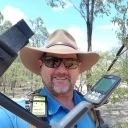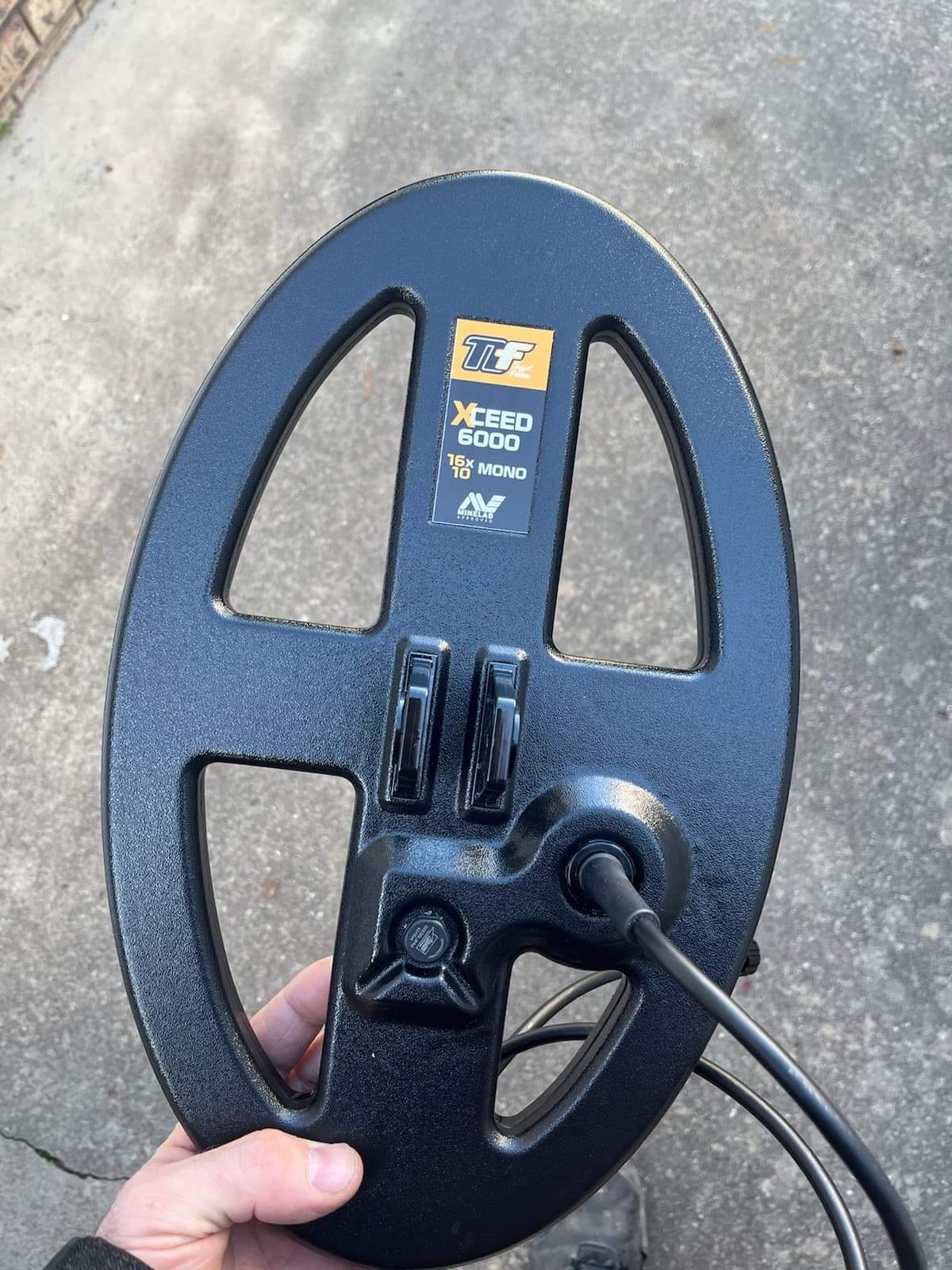-
Posts
1,090 -
Joined
-
Last visited
Profile Information
-
Gender
Male
-
Location:
Clermont, QLD, Australia
-
Gear In Use:
GPZ 7000, ZSearch17x13, ZSearch12, GPX 6000, Xceed 16x10, Xceed 12x7, SDC 2300, GM 1000, EQX800
Jonathan Porter's Achievements

Gold Contributor (5/6)
5.8k
Reputation
-
Jonathan Porter started following The Trolls Are Winning? and What's The Go With Nugget Finder Coils?
-

What's The Go With Nugget Finder Coils?
Jonathan Porter replied to phrunt's topic in Detector Prospector Forum
Nuggetfinder are tweaking both those coils sizes to play better with early sampling PIs, I presume the Algo and some of the 5000 mod builds that are now becoming popular. Chances are he’s holding back on doing other Evo sizes due to huge demand for Xceed and Zsearch sizes. There’s only so many hours in the day, the factory can only put so many coils through in a week and the back orders have to be dealt with. The rest is likely Socrate’s-isms plucked from social's. 😊 -

The Trolls Are Winning?
Jonathan Porter replied to Steve Herschbach's topic in Metal Detector Advice & Comparisons
The Ace 300 is one of the all time greats and acknowledged as such by people who know and to be honest would suit the vast majority of people wanting to just have some simple fun looking for coins and relics. Currently my favourite Minelab Coin/Relic machine is the Xterra PRO, I can’t believe the quality and features for the money (I’m a Minelab dealer only and don’t see other brands very often as we are in goldfields country). The beach mode on the Xterra PRO is surprisingly good on tiny gold in quiet ground. 😉 Switch on and go simplicity, learn your numbers for our Aussie 1 and 2 dollar Goldie’s and you’re good to go. In the gold game it’s all about performance in hot soils from my perspective but I see plenty of people having fun finding a few pieces with the older outdated machines even modified ones, even, God forbid, non-Minelab machines 😳 😂 . Use the best you can afford and go have fun is my motto. BTW sometimes the shoe is on the other foot, I’ve had people, who know I’m a bit of purist, get all bent out of shape because they were using something they must have felt was less than I was using and acted as such. This happens a lot with the mods crowd only thing I say to them is ML will not service if it fails. Or if they make claims that are illogical ect. Other than that go detecting it’s healthy and it’s fun. 🤩 😊 JP- 49 replies
-
- 10
-

-

The Trolls Are Winning?
Jonathan Porter replied to Steve Herschbach's topic in Metal Detector Advice & Comparisons
- 49 replies
-
- 20
-

-

-
Jonathan Porter started following Minelab Gpx17 (17x13) Mono Coil Now Or Wait For Nf 16x10 Mono , GPZ 7000 And X CC Coil Question? , Website Rollback - Latest Info and 3 others
-

GPZ 7000 And X CC Coil Question?
Jonathan Porter replied to Ethan in Adelaide's topic in Detector Prospector Forum
The 6000 has a specifically designed DD coil that deals with BAD conductive signals VERY well, however the GPX11 mono is pretty good in all but the worst ground, the bigger the coil the greater the conductive signals will be. Auto mode can also help with this. The other way to deal with conductive signals is to SLOW the sweep speed down and cramp up the range of motion (sweep distance from side to side). JP -

GPZ 7000 And X CC Coil Question?
Jonathan Porter replied to Ethan in Adelaide's topic in Detector Prospector Forum
Lifting a BIG coil up and down in conductive soils will generate an out of ground balance signal. To confirm lift the coil in an arc from ground height to above your shoulder and down again, if there is a moaning signal then that’s conductive signal. I demonstrate conductive signal on a GPX6000 at the below FB link, but the principle is the same with all metal detectors. https://m.facebook.com/story.php?story_fbid=pfbid02tdhGfzSVANcrHDNaa4X9ztkr2iydEoUpufUWJ1ZhDnbLB6cdgqLurrGBQLr5W8Wnl&id=100000379522831 Hope this helps JP -

GPZ 7000 And X CC Coil Question?
Jonathan Porter replied to Ethan in Adelaide's topic in Detector Prospector Forum
https://www.facebook.com/100000379522831/posts/pfbid0315dMMHB72H8HjYkbW5Hn7eUGEJK9whMLAq2HPUFVdrSsvEAiATtCJy5zc69TrjAQl/? Not sure if FB link’s work on the forum. I put up a video up a few days ago showing my recommended ferrite balance methods. JP -

Where Are All The In-field Reviews Of The E1500???
Jonathan Porter replied to Aureous's topic in AlgoForce Metal Detectors
It’s not $2000, it’s $2300 plus a battery plus a coil etc. I’m still waiting on mine, I’ll buy one because I’m a metal detector tragic and they’re cheap enough for a bit of play. I just couldn't justify an Axiom in Australian dollars!! From my Algo expectations perspective, I’m already in the boat described above because I view my GPX 6000 in the same light compared to the 7000 which is my everyday machine. I only put the 6000 on when I want to muck around and have some fun, so with the Algo when I get it I’ll just be targeting ground where a very early sampling PI has an advantage, they don’t have smooth so why go into nasty variable high X ground? ? I have numbers of locations ideal for a nice little light weight thing-a-me-bob like this and I look forward to pinging a few tiny bits in low mineral ground that gives all the VLFs conniption's due to the MANY MANY hot rocks driving you ka-boing ka-boing nuts. ? JP -
An EPM doesn’t give the holder exclusive rights in QLD. Under QLD law with pastoralists/landowners permission anyone can detect on an EPM which is how the whole Palmerville pay to detect arrangement works. The landholder has the right to give permission with conditions which in the case of Palmerville means NO detecting on pending mining leases even though legally they can be detected on in other areas such as General Permission areas. I think this rule is currently under review in QLD but is a political hot cake due to two perceptions, one is the frustration of the pending lease owner having pegged the ground then it being targeted by detectorists (hence the rule on Palmerville) but also because the lease is NOT yet granted in the eye of the law there is no ownership until it IS granted which can take many years, this can be frustrating for the peg’ger seeing their pending being smashed hard but also potentially meaning a lot of good ground gets tied up through real-estating and effectively removed from access for detectorists which is in short supply at the best of times. Currently there are a lot of pending mining leases in QLD including in General Permission areas which is very disturbing for hobbiest detectorists. I see the frustration from both sides due to red tape and bureaucracy. The time taken to grant a lease is extremely long, so I feel for the genuine miners who want to start moving dirt, however Conversely if it were quicker the pegging and selling to make profit would be rife with the potential for a lot of damage done to some areas and less and less ground available for people seeking the freedom to detect. An EPM does give the rights to the EPM holder to do sampling and minimal land disturbances and to peg mining leases, this includes under agreement arrangements rights with the landholder to gain access to the ground in the case of a pastoralist not being open to allowing access via the Fossickers Licence arrangements. Currently small miners and prospectors are taking up EPMs for that very purpose hence the for-sales ads. Vast tracts of gold bearing ground in QLD are taken up by EPMs both for Gold and other minerals as well as coal. There are also vast tracts of land that even EPM holders have difficulty accessing due to difficult landholders. Large mining companies just throw huge amounts of money around and get access that way or even just outright buying the pastoral holding, the little guy is slowly being squeezed to death on all fronts, yet they are the people who actually walk the terrain and make a lot of the discoveries. It’s a complex subject with all parties having a valid POV, pending and current lease holders, pastoralists, serious prospectors and hobbyists. JP
-

Which Coil(s) Do You Use On Your 6000?
Jonathan Porter replied to Detecting with CM's topic in Detector Prospector Forum
You mean coming to terms with multiple close family members passing away from Covid, then getting Covid themselves, whilst trying to run a business? All the while working stupidly long hours with a back injury! I think it’s pretty well established the GPX 6000 pushes PI to the very edge and as such the tolerances on everything associated with it are extremely tight, subsequently very simple things during manufacture can have a big impact on the product. NF set the bar extremely high with their products and honour their warranties (THAT is NOT saying other manufacturers don’t BTW). Minelab do the same but still things go wrong and they have an army of engineers to work on solutions. The 12x7 is popular because of that bar being set very high and creating a differentiation. From NF’s POV the aim was to push the manual sensitivity control as high as possible, the higher you can get that manual control the more information you can get from edge of detection targets and the quieter the experience is for the operator, so the 12x7 coil was designed from the ground up to do exactly that. I know because I had many discussions with NF about this very subject throughout the design process, including carrying that over to the 16x10 when it becomes available. To achieve this required huge amounts of R&D and field testing, people on the outside only see the release dates being pushed back they don’t see the agony of the constant hurdles being thrown in the way as one niggle is sorted to then discover another. Yes it’s not a good look and it’s not ideal and customers are frustrated and impatient, but unless the coil meets the standards it will not be released. Every coil that leaves the factory has to be exactly the same as the others as possible or it’s a fail and even then things can go wrong. I don’t speak for NF but I do know a lot of the backstory and the stress and toll it’s taken to get the 12x7 Xceed to where it is today, that coil is a testament to Rohans determination to get things right. Sure the situation isn’t ideal and I get that I’m often chided for backing companies against the little guy, it’s very hard not to when you see and know the full story of what’s involved on a personal level. -
Not so sure about my ability to be too technical ? but in essence conductive signals are salt signals created by moisture in the ground. Even in the desert there is sub soil moisture and particularly in goldfields because gold weathering from host rock involves a lot of clays being formed. The rocks on the land contain minerals, those minerals get absorbed by water after rain, the water then flows to the sea and evaporates leaving the minerals behind, that is why the earths oceans are salty. During rain events in the goldfields the weathered country also has concentrations of minerals on the surface of the ground this is due to oxidation just like rust on your car, when those concentrated minerals get damp the conductive signal increases dramatically and in some instances to the point that a metal detector is unusable or a coil that can handle conductive signals has to be used (like the DD coil supplied with the GPX6000). When conductive signals are present the response they create masks or hides edge of detection deep signals, the detector also becomes very swing speed dependant so a slow Motion filter becomes problematic (called recovery on a lot of coin machines), the GPZ 7000 has a Motion filter called Ground Smoothing when applied you can hear the threshold becoming more erratic and unstable but depth is lost so I never use it and instead focus on my coil control. Conductive signals are made worse by larger coils, this is because the conductive signal is seen from a very long way away from the coil. In wet conditions you can see this for yourself by lifting/raising the coil from ground height to above your waist, you will hear a loud long drawn out moaning sound as the coil is moved through an arc. So a smaller coil is recommended when the ground is damp which does not help ground coverage when patch hunting in wide open spaces. The other issue is damp mineralised clays, those can have a complicated effect on a metal detector, especially a highly sensitive machine like the GPX 6000, or GPZ 7000. They produce a combination of conductive signals and another effect on micro magnetic particles in the soils which are impossible to ground balance out, these signals can sound very target like both sharp and shallow sounding and also broad and edge of detection deep sounding. The wetter the ground the worse they are. A key to identifying these is coil control and sweep speed. There are a few immutable things about a motion detector, if using a consistent range of motion relative to the depth of a target (that’s the amount of distance the coil needs to be swept relative to the ‘lead in’ and ‘tail out’ positions of a target, basically from the point the threshold starts to change from the left to right and the other point going back the other way from right to left), then two factors have a bearing on a “real” target over a ground generated one. One is the height of the coil relative to target, in other words the closer you get to a target the louder it should get (very dependant on ground effect (for another discussion another day)) and the speed of the sweep. If the range of motion is maintained but the sweep speed is halved then theoretically the target response should effectively double. A conductive target like response will not do this and will get quieter not louder. In other words, in damp conditions slow down. The reason we move the coil is because the detectors are motion detectors (coil needs to move relative to the target to generate a response), the coil movement is all about the receive aspect not the transmit, moving the coil allows you to investigate any weak fields created by a target, the receive coil of the detector needs to move through the field created by the target, these fields will be thousands of times weaker than the transmit so require careful coil control to manifest properly. Hence why it’s so important to have good coil control, being prepared to vary and control the sweep speed and maintain a good range of motion when investigating edge of detection targets. Accurate ground balance, consistent coil height, good range of Motion and constantly tweaking the swing speed are all vital skills for working successfully with a metal detector, especially in conductive areas. You get all these things into alignment and deep targets jump out at you. Hope this helps JP
-
Biggest issue with going larger coils with an extremely sensitive PI is the conductive signal. Open areas like WA are really bad for conductive signals and will punish an operator if they go too big. You can use a GPX 5000 with a large coil for prospecting which is less prone to conductive signals but then you lose that tiny nugget sensitivity of the GPX6000 which can be the on;y clue to a good patch or gold being in the area. The GPZ7000 has the same limitation which is why NuggetFinder built the Zsearch 17x13, a good compromise between sensitivity and coverage in vast open spaces. I’ve used one of the early proto 16x10 Nugget Finders in WA and found it to be a very nice blend of quiet running and good coverage with very good depth, it’s like a plumped up 12x7 Xceed. It’s still a work in progress and had to be put aside all of last year due to a number of factors. There are only so many hours in a day, the demand for the 12x7 was off the charts and still is by all accounts. JP
-
Lunk started following Jonathan Porter
-
I’d say, and this is just my opinion because I actually haven’t discussed the price increases with anyone, but I’d say it’s to do with the Aussie Dollar against the Greenback. Minelab have had no significant price increases in Australia for a long time and have most likely swallowed up the depreciation in our dollars buying power. Considering their main market is largely offshore sales it makes sense they trade in US dollars and that would then flow back to pricing here in OZ. Everything in Australia has gone through the roof since Covid (there’s that word again ?), fuel is over $2.10 a litre for diesel here in my home town, electricity has gone up 30% pretty much across the board etc etc. It’s just getting harder and harder to run a business without passing on the cost increases to customers. Property prices are still very high even though the RBA has been lifting interest rates constantly to try and control lending ect, but with the crazy high immigration numbers that’s putting massive pressure on rentals and property values. Probably an over simplified, ill informed understanding of the key drivers behind our economy. Not trying to defend Minelab’s decision to increase prices here, but I would say that is the key trigger point for the reason to do so. ? Thank heavens Gold is AU$99 a gram, especially with a vacuum cleaner of a machine like the 6000. JP ? (Because of inflation I can no longer use just my 2 cents GIF ?)
-
I hold the 7000 in air with left elbow balanced on the top of the arm rest strap, holding the handle with my left hand with the coil held flat in air relative to the ground (folded flat against the shaft), then with my right hand I quickly side to side wave the ferrite on a stick over one receive point UNDER the coil (both receives are fine too) to excite the X balance (Ferrite calibration) with the unit in Semi-Auto and Quick-Trak button held in. (I usually wave a bit before triggering QT to listen to how much ferrite signal there is first). Sometimes it pays to release QT and trigger it again a few times to excite the tracker and force the process. When you use this in air method the G balance will be out as it’s balancing to nothing (X and G are both balanced out at the same time when QT is triggered) so once QT is released I bring the coil to the ground and gently pump up and down and will even sweep side to side then up and down to allow the Semi-Auto GB to get the ground balance (G balance) back to accurate. Sometimes if the GB is way out the tracker will lock because of the loud ground signal (called pausing effect, you need this to prevent tracking out a good target at depth), so I’ll just place the coil on the ground and leave it motionless for a few seconds to allow the tracker to unlock, then resume pumping, repeating this till you hear the tracker kick back in and balance out the ground signal. At no stage after this process do I EVER trigger Quick-Trak unless the Ferrite is present. If you want to be particular and OCD like me you can lift the coil in air again after the ground balance is correct and check the ferrite in air without pressing QT to double confirm there is no Ferrite signal. BTW it is OK to have a small amount of Ferrite signal as the ground signal will always be stronger than a tiny bit of residual Ferrite signal. The timings that require the most attention are High Yield Difficult and High Yield Normal especially if you have the Gain up a fair way. The key thing is to get rid of any loud signal coming off the ferrite, if there are loud signals the G balance will try to compensate for them and your ground balance will be inaccurate. I don’t ever use AUTO because if there are conductive signals present (all gold fields have them) or saturation signals (Australia usually has both together, especially after rain events) then the tracker can’t tell them from X signals and will come up with bad numbers, the poor old G tracker will take the brunt of the assault and try and compensate ending up with a lot of false signals and an unhappy user. When using Semi-Auto, the ferrite calibration is linked to the detectors electronics and more particularly the temperature of the electronics. So in winter for instance the detector will be at ambient temperature at the start of the day, from start up it will be dead cold gradually warming to over 45 degrees internally, so the calibration at the start of the session will slowly move away from optimum to operating temperature but the Ferrite balance is locked in Semi-Auto mode once QT is released, so I recommend to check the ferrite calibration after an hour. In warmer weather it hardly changes (minimums of say 18 degrees C to over 40’s), but I check it anyway because I’m OCD as heck about it. ? The key is to have no signal off the ferrite. X balance is tied in with the temperature of the electronics, the X balance calibration is locked if Semi-Auto is used. If X is correct (no signal off the Ferrite relative to the electronics temp) then it doesn’t matter how bad the ground is for X no X signal will be heard unless it is extreme like a high X hot rock (magnetic hot rock). Any X signal that is seen by the machine (incorrect X balance for example) can mask or hide a good target signal at depth. X signals get blended in with general detector behaviour and are very hard to isolate, it’s just an extra layer of noise that does not need to be there. The Ferrite represents X, the one Minelab supply is a specific type, so not just any ferrite works. The reason I use the above in-air method and not just putting the ferrite on the ground is because I work in mostly high X and more particularly high Saturation environments. If the ground has high saturation (where the Tx is affected by highly magnetic surface particles) the saturation signal can be boosted/magnified up through the centre of the ferrite more than double the distance from the ground where the saturation would normally be heard, this can trick the X tracker to some extent but also give the impression the X tracker isn’t working in the Semi-Auto mode. In such cases no amount of ferrite balancing will get rid of the signal as it is a magnified saturation signal you are hearing not the Ferrite, this magnified saturation signal prevents you from getting the coil right onto the ferrite for best calibration practices. Such scenarios can be very confusing and damage confidence. So for peace of mind I just do it in air to get the best calibration possible. NOTE: You can place the ferrite on a large rock away from saturation signals if you have no stick or left the stick at the car. The key here is being informed, knowledge is power. Once you know what something is, then you’re empowered to do something about it or ignore it. That is the mantra of all my training sessions, informing and empowering. Hope this helps JP
- 37 replies
-
- 6
-

-

-
- minelab gpx
- minelab gpz 7000
-
(and 1 more)
Tagged with:
-

GPX 6000 Manual Vs Auto Preference
Jonathan Porter replied to Dutchman4's topic in Detector Prospector Forum
Think of it like this, the Difficult timing is a pure “Smooth” type timing whereas the Normal timing is an even blend of both simultaneously. As far as I can tell the vast majority of the target signal associated with tiny nuggets comes from the “Difficult” part of the duality in Normal mode. Non ferrous are the best targets too test on, ferrous will always behave in a differing manner due to having a magnetic component to them. The point to all this is to encourage people to have faith in Difficult/Smooth, especially in areas where Normal can be used like the US but where hot rocks are prevalent and more especially where the ground is shallow and the gold small, in ground like that there’s usually no need to go to Normal unless there’s a chance of deeper larger pieces. JP -

GPX 6000 Manual Vs Auto Preference
Jonathan Porter replied to Dutchman4's topic in Detector Prospector Forum
All the small target sensitivity comes from the “Difficult” part of the Normal/Difficult combination of the Normal timings mode. If the target signal sounds louder its because the Normal part of the timing is also seeing the target assuming the ground signal does not drown everything out.




.thumb.jpg.008984156b596a0063f90b0d7fbc295b.jpg)



.thumb.jpg.77e4cb5bf39d44bdd2050d2edb7dfdb1.jpg)

